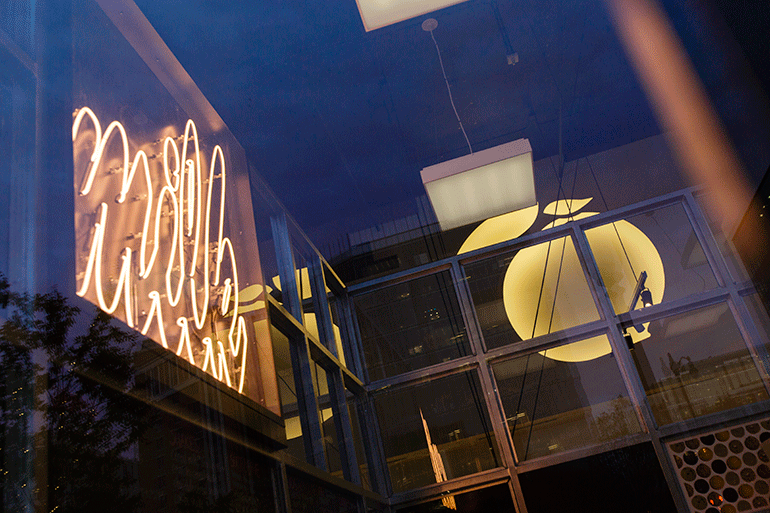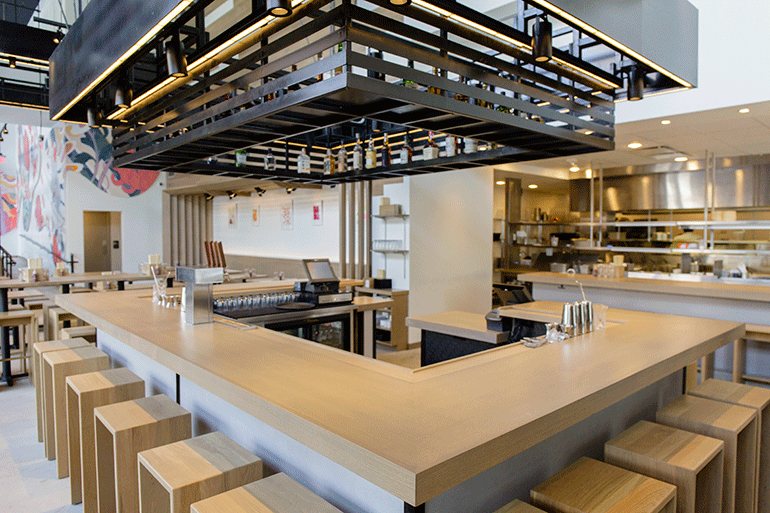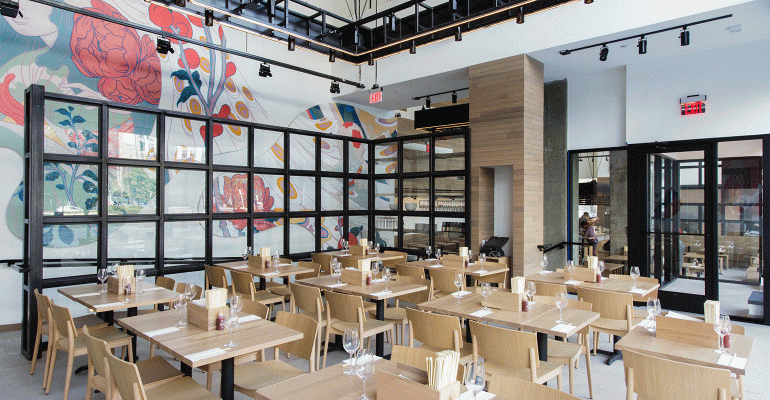Restaurant designs that up the sophistication factor and create an out-of-the-ordinary guest experience in a more thoughtful way are top of mind for DC-based designers David Tracz and David Shove-Brown of //3877, a design firm in Washington, D.C., that’s behind the design of the spaces of Momfuku Milk Bar’s D.C. location, Matchbox, Territory Kitchen + Bar, Capitale, 3 Stars Brewing and more.
//3877 co-founding principals David Tracz and David Shove-Brown have some definite ideas you can use about what makes modern restaurant spaces dynamic, exciting and inviting. Mindfulness is the attitude that will move these changes forward.
“More mindful design is going to tie into the definition of space and the use of space,” Tracz says.
Here are five lessons in mindful restaurant design from these masters of the craft.
Creating new experiences within the same restaurant
When //3877 were approached by The Matchbox Food Group to rebuild a historic DC building and open the group’s fifth restaurant, the team at //3877 took the 1907 former jazz club down to its skeleton. Within those bare bones, a few different dining experiences began to take shape.
“People want to have different experiences and come back for more experiences,” Shove-Brown says. “All sorts of different elements are at play: it’s about the food, the service, the seating, what the menu looks like…what do you smell? What do you hear? Maybe you’re there grabbing a drink with friends or maybe you want a smaller booth for a date or dinner with a friend. Multiple groups can have different experiences in the same environment.”
At Matchbox, one very different way to experience a meal is perched inside one of two “floating” boxes, glassed-in seating areas that are a conversation piece in and of themselves, and often a sought-after reason to return.

Décor that makes sense/repurposing with a purpose
We’ve all seen examples of “forced history.” Examples include tacking up reclaimed wood everywhere for no reason and adding little tchotchkes that don’t add to the story of the space. It’s random, and it’s not adding much to the design.
“What we’re starting to see in the design world is getting away from a faux history and going with the real history,” Shove-Brown says. “Don’t get a bunch of little trinkets from a second-hand store. Most people are thinking, ‘Did they really dust those?’”
This distinction is leading to the end of reclaimed wood as a trend, because, as Shove-Brown says, it became “fake reclaimed.” (“I went to a hotel last week and it was like a reclaimed wood showroom,” he adds.)
Instead, as the design team put into action at Matchbox, it’s better to use old things for a more practical purpose, as in taking an old door and making a counter out of it. The key to using antique décor is to first have a true story to go with it.
“Don’t just litter the place with pseudo antique signs you found,” Shove-Brown continues. “Find one real sign and make it about the location.
Location-specific items will be the sign of great design moving forward.
“You can do a Southern-influenced restaurant in New York, and you can reference ties to both locations in the design,” Shove-Brown says.
Creating a balance
Balancing traditionally masculine style elements, like the austere and streamlined concrete and wood of Momofuku with more traditionally feminine elements (a colorful mural) is a way to make the space feel right, Shove-Brown says.
“It’s the balance of different types of materials that makes that work,” he adds.

More sophistication, please
Has farm-to-table dining gone too far in influencing design?
Tracz thinks so.
“I think now we’re starting to see a movement away from the over-casual farmhouse look; I’m just tired of it,” he says. “I think there’s a movement towards something that’s a little more sophisticated, a bit more thought-out and in some cases a little more architectural in design.”
Tracz says while there’s a definite move away from predictable trends, don’t expect to see them go away entirely.
“People will still go for the safe bets of rough walls and Edison bulbs,” he says. “But I think the ones who are more thoughtful are going to see it’s blend of the look and feel that really compliments the food. If the food is sophisticated, why not have more sophistication in the design?”
Color making a comeback, but in a subtle way
All-white walls have their appeal. Certainly, the public is influenced by T.V. shows that feature house makeovers whitewashing everything in a very safe, predictable way. But more color could be on its way, and not a moment too soon.
“I think color is going to make a comeback,” Tracz says. “There may be a lot more hints of colors rather than a huge accent wall. Maybe it’s the chairs, or the underside of something. It’s more subtle. Like the inside of a doorframe where people will walk in and say, ‘Is the side of that pink?’”
Things to avoid
Topping the list of Shove-Brown’s pet peeves is a lack of flow in a restaurant, a feeling of not knowing where to go when you first enter.
“You want to make it clear where to go. Have a host stand where it’s evident what to do. You want people to feel comfortable,” he says. “And the one thing that gets me all the time is that people think you need a hallway to get to your kitchen and your bathroom. It’s a total disaster zone. Now you’ve got a busser carrying a tray full of dishes and a person trying to find the bathroom. It’s just so bad.”
Another often-overlooked design issue is the delicate balance between having enough seats at the bar.
“You want to have enough for people to wait at the bar, not so crowded that people say, ‘Screw this, I’m outta here,’” Shove-Brown says. “But you don’t want the bar to be so empty that people say, ‘This place sucks.’”





